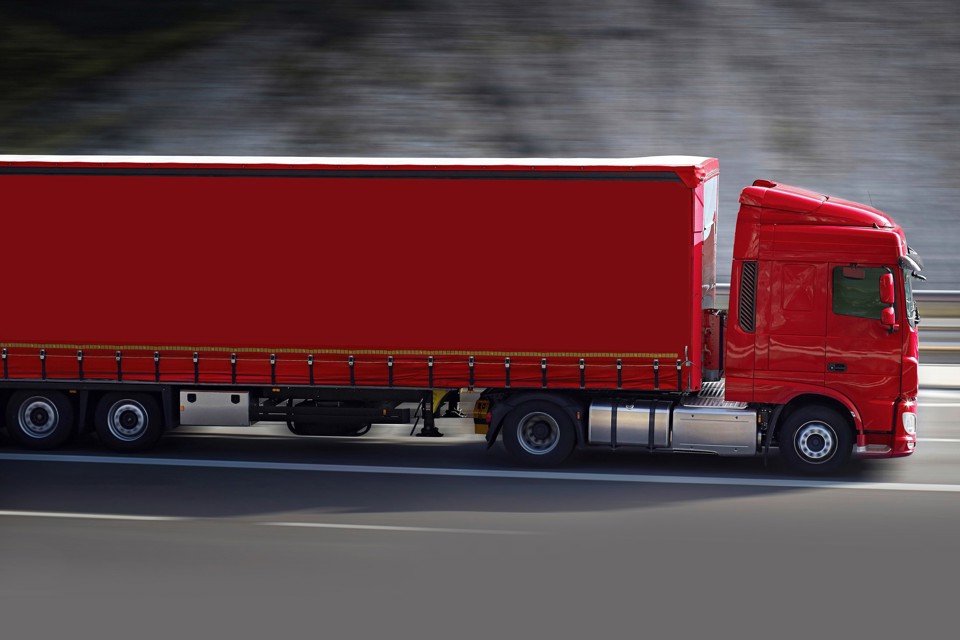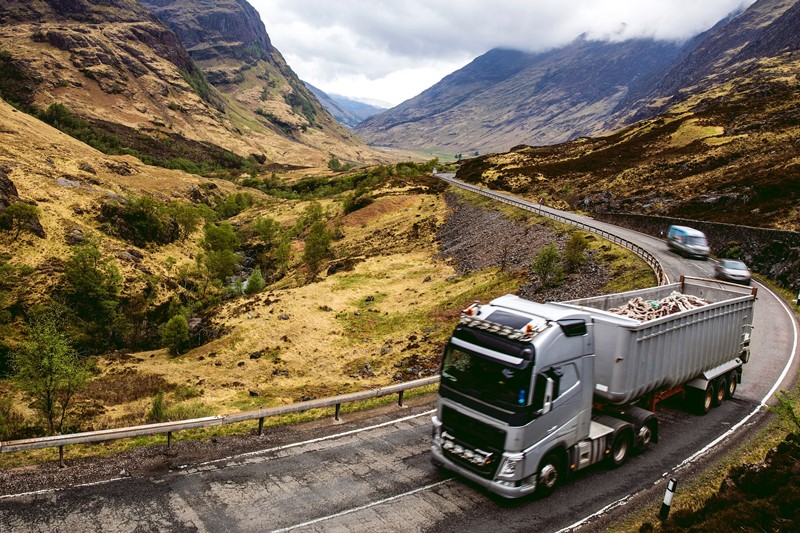Load sharing and back hauling are not new concepts. In fact, it seems fairly logical that operators would seek to fill empty trucks and vans that are on their way back to a depot, be that with internal or external work.
For a logistics company, an empty truck is doing nothing but harming profits, while for a business with its own fleet, empty trucks are adding unnecessary costs.
As fleets face increasing pressure to decarbonise and local authorities look to reduce urban congestion, the benefits of consolidation become more apparent.
Despite this, the latest figures from the Department for Transport (DfT) show that empty running is beginning to stagnate at around 29% of HGV journeys. Articulated vehicles are utilised marginally better, running empty 28% of the time, versus rigids that are empty for 30% of the time.
But, figures dating back 18 years suggest there has been little improvement made.
Christopher Snelling, head of policy at the Freight Transport Association (FTA), says: “Our perspective is that we are better than the EU average. There is less empty running here in the UK than the EU average, there is less here than in places such as Germany.
“What frustrates us most in the debate around empty running is there is almost an assumption that there is loads of it and, if the logistics industry would do something about it, we could all reduce our carbon emissions and road congestion.
“How much it’s talked about is very frustrating because the industry has made great strides in doing it and, of course, it would because it’s a massive way to save money.”
Snelling believes if no operators bothered to do anything proactive, the natural level of empty running would be somewhere in excess of 50%.
“In fact, the level in Britain shows the extent of how much is filled. Even that underestimates what is achieved, because there are parts of the industry that will only ever be full one way, such as the oil tanker, because there is nothing else you can put in it,” he adds.
Collaboration
For operators who are unable to schedule their deliveries in such a way that empty running is avoided, there is a breadth of platforms available that enables operators to share loads by utilising spare capacity or back haul goods for others.
Freight exchanges enable businesses to advertise loads and many hauliers use them as a means of finding work. Through profit-driven optimisation, those operating in the haulage and transport sectors have the lowest instances of empty running.
If an operator has a one-way load, rather than hauling themselves they could advertise it on a freight exchange and let another operator who already has a job going the other way take it on. While they will have to pay that operator for their services, they will make savings by not using their own fleet.
Nationwide haulier Ivinghoe Haulage has managed to greatly improve its capacity since joining Haulage Exchange, a freight exchange platform operated by the Transport Exchange Group.
Sue Levy, the company’s transport manager, says: “We use Haulage Exchange for load building and return journeys. We already have a large customer base so, most of the time, we’re not relying on the exchange for that first load of the day.
“Before we began using Haulage Exchange, if, say, our driver had dropped off in Daventry, there would be no guarantee we would be able to find him another load and there’s every chance he might have no choice to return to base empty.
“However, Haulage Exchange helps us build on that first consignment.”
The platform offers a ‘smart matching’ system to seek out compatible loads.
“Travelling home empty can really eat into margins,” Levy adds. “We use the exchange’s real-time matching technology to find loads for our drivers which take them home. It’s great because the live tracking map pinpoints available and suitable loads in real-time without us having to phone bash – which is what we were doing before. Since we’ve been using Haulage Exchange, it’s rare that we don’t secure a return load at least part of the way home.”
The Transport Research Laboratory’s Freight Collaboration Study report states: “There is a key distinction between those companies with logistics as their sole activity (hire and reward operators) and those who run HGVs as a means to facilitate their core business (own account).”
While using a third-party haulier is pretty clear cut, the study found there were a number of areas for potential collaboration between own account fleets in different sectors of the industry.
Both parcel and construction fleets felt they were best suited to internal collaboration, by maximising load capacity through shared fleet and resource usage.
The study also found that retailers were using reverse logistics to a high degree, by backhauling their own waste and returning assets from store to operating base. But it felt there was potential to grow the level of backhauling to fully utilise capacity.
While operators are keen to realise the benefits of collaboration, many are constrained by service-level agreements, incompatibility of IT systems and regional imbalances.
Snelling says: “Cities consume and goods are produced outside of cities, so there will always be an imbalance in the quantity of goods that need to go from A to B and then back from B to A. So, empty running is unavoidable in some sub-sectors and a degree of it, in those sectors where it is available, is sometimes unavoidable due to the flow of goods.
“There is always the potential to do that a bit more. That is what logistics does, it finds that extra 0.5% here or 1% there. For an individual operator, if you can find someone that matches your movement so you can do a backload, even if it means doing a bit of a triangle route rather than direct, that can be massively commercially worthwhile. Plus there are the social benefits of emissions reduction, congestion reduction and all those other things.”
Optimisation
On average, HGVs have a loading factor of 61% according to DfT figures. This is based on the amount of goods moved versus the total amount of goods that could have been moved if the vehicle was fully laden.
It means most vehicles have at least a third capacity spare, which can be used to haul additional loads such as those found on freight exchanges.
By consolidating road freight into fewer trucks, the result is less congestion, less emissions and more profitable fleets.
The Transport Research Laboratory found the cost savings achieved by reducing mileage by 1% were not effective when compared to the cost of subscribing to a freight exchange. But, if operators can achieve a 5% reduction in base mileage, they can expect to save more than £3,000 per vehicle over six years.
Back in January, Royal Mail head of fleet operations Debbie Rivers outlined how the organisation’s ‘empty legs’ initiative was offering a solution to the big distribution challenge of running empty or part-empty vehicles after making deliveries.
“We have sold space to more than 150 customers on empty legs, carrying everything from baked beans to bubble bath, from Inverness to the south-west. We have fixed routes that we run and also an element of flexing with extra routes,” she says.
“Some customers buy a guarantee on the route; others are ad hoc requests. Year-to-date, our empty legs project has saved 55,000 miles for our customers.”
The concept worked well, although Royal Mail has since scaled back its proposition due to growth in its own business, particularly on the parcel side.
It has invested in three automated parcel hubs to support this expansion, which is limiting the opportunity to offer other customers space on its trucks, according to Duncan Webb, Royal Mail Fleet commercial director.
“This year, we will do 800-1,000 empty legs fulfilments with other businesses, so it’s a smaller part of our business,” Webb says. “It is hard to unlock in our core business because we are moving parcels around the country all the time and we don’t run back empty.
“We were filling true empty space, not filling (part-loaded) space. But, because of our next-day deliveries, we can’t have trucks stopping to collect other people’s goods.”
Nevertheless, Webb believes “it works as a concept, especially when it’s regular business so you have a time and place to collect”.
The issues arise when customers don’t work to the same strict collection and delivery times. “There’s always a tolerance of acceptability, but they may not make the (agreed) time,” Webb explains. “We aren’t used to that in our business.”
The sharing economy
People transport has been revolutionised by digital services that connect drivers and passengers with their smartphone app, such as Uber.
These platforms improve the efficiency of people transport by connecting passengers to the nearest available taxi, rather than passengers calling for a random taxi which may not be the nearest one.
The modern freight exchange platform uses technology to connect haulage operators with empty vehicles to companies with goods that need delivering.
Richard Newbold, founder of freight exchange platform Returnloads.net, says: “In the early years freight exchanges were nothing more than load boards for hauliers to find extra work but, as technology has advanced, so has the freight exchange.
In a similar way to Uber, a freight exchange will automatically alert a haulage operator when a load is added that matches their requirements. It also works the other way around and alerts the supplier when a vehicle is available that could deliver their goods.”
Freight exchanges can now seamlessly integrate into transport management systems and telematics systems, making the whole process of filling empty vehicles and subcontracting out delivery work quicker and easier.
Mubarak Moosa, consulting director at Frost & Sullivan, estimates there is about 55% under-utilisation in freight, when empty running and partial loading is taken into account.
“Now imagine the power of connectivity and digitalisation. If we could create a seamless connection between the supply and demand side, then you could remove this empty load and this, we believe, could stabilise and increase efficiency to more than 60%.
“This is where we see new business models coming into the picture.”
One of the disrupters looking to achieve so-called ‘digital freight’ is OnTruck. It seeks to optimise the routes taken by its hauliers by offering them loads via a mobile app.
The company’s algorithms can plan the most efficient routes that enable vehicles to maximise capacity while fulfilling the needs of businesses.
“Digital freight is so fresh in the UK,” says Samuel McGuirk, head of UK operations at OnTruck. “For us, we specialise in the lower number of pallets that you don’t want to do yourself. There is no one competing in that space because it is usually seen as not profitable.
“We want to focus in high-density high-volume areas, where the journeys are typically short haul and we can group and multi-route those jobs to create a healthy ecosystem that spans from artics to vans.”
The Spanish company, which launched in the UK in September 2017, handles around 2,000 shipments per month.
McGuirk believes digital freight has the potential to be 10 times the size of Uber with its main advantage being no limit to its scale or flexibility.
He says: “You can never assume that things will be normal. Amazon, for example can see huge unexpected spikes in demand. A typical haulier has a cap on the amount of journeys they do. For us, we can absorb the additional work into the platform.
“The feedback we’ve had is really strong, considering we are the new kids on the block from a freight perspective.
“The biggest challenge is changing mind-sets. Once we get the data we can show what we can do, but pushing people over the line to trust the technology and change their model relies on you taking them on that journey.”





















Login to comment
Comments
No comments have been made yet.